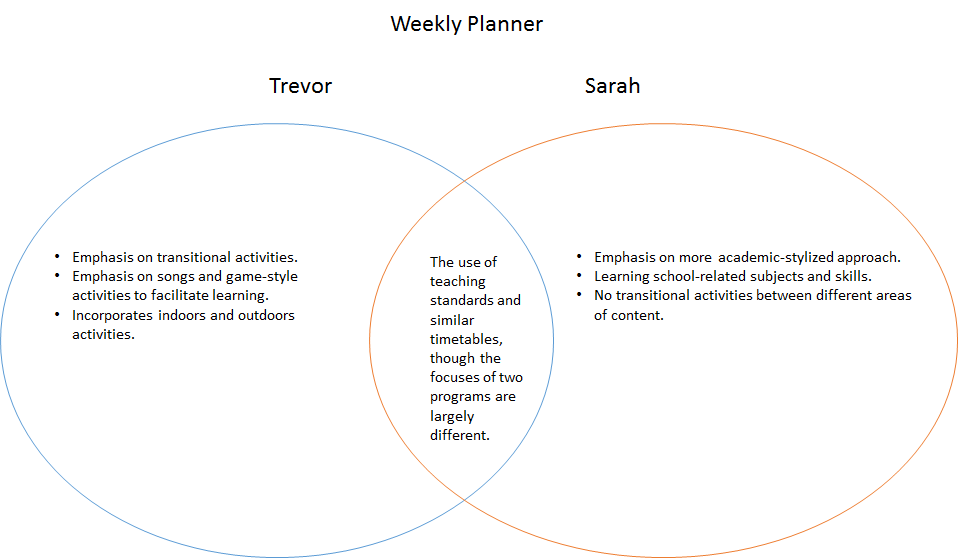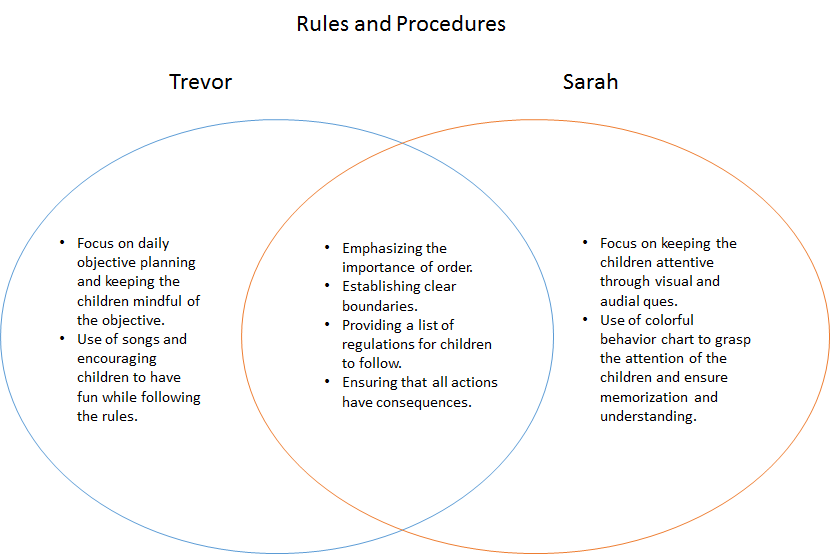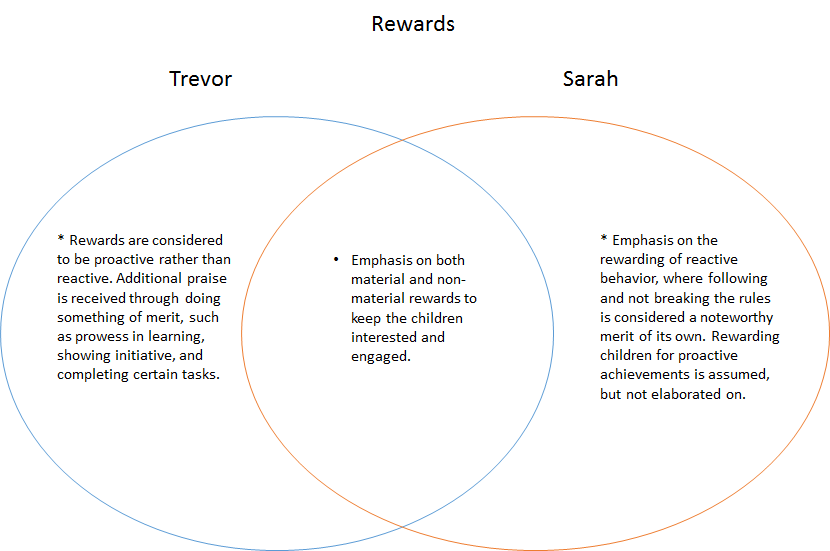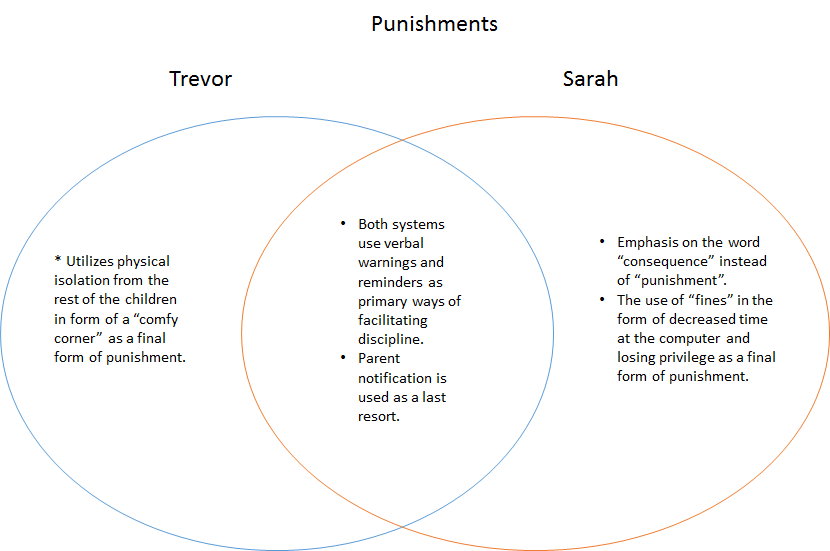Introduction
Modern pre-school education in the 21st century is different from what it was 30 years ago. With the current objective being not only the development of useful skills that would be useful to a child in the elementary school, but also the cultivation of personal qualities, creativity, initiative, and diversity, the teacher’s role is more important than ever. A modern teacher needs to be well-educated and well-aware of the recent developments in child psychology and pedagogy, in order to ensure a brighter future for the children under his or her care, as well as for the society as a whole. The children are our future. The purpose of this paper is to compare and analyze the two approaches towards preschool children’s education methods, namely towards the concepts of learning, procedures, discipline, punishments, and rewards.
Trevor’s Approach
Trevor’s approach towards pre-school children’s education is largely based on modern practices, as it could be seen from the dates of his list of references – all three sources are educational and organizational pedagogical sites that contain digests of the most recent practices. Many activities and pedagogical techniques listed in his systems paper and weekly planning schedule show a heavy emphasis on teaching the children to read, write, draw, and count through games and songs. This approach is similar to what is described by Jarrett (2014), who states that children are more open to learning and developing new skills when they are introduced as fun activities rather than chores that need to be accomplished.
Trevor’s approach towards discipline, procedures, rules, rewards, and punishments falls in line with the traditional practices of setting clear borders and limitations, as well as introducing systems of incentives and consequences to promote positive behavior and extinguish deviant tendencies (Emmer & Sabornie, 2014). His interpretation of rewards involves verbal praise as well as the introduction of small tokens and symbols of success, while punishments are treated as opportunities to learn from wrong behavior. Unacceptable behavior is treated by appealing to parental authority and physical isolation of the child from the rest of the group for a period of time.
Sarah’s Approach
Sarah’s approach towards preschool education is more traditional in terms of activities and techniques used in order to educate the children. Unlike Trevor’s approach, which focuses on music, singing, and fun contests to get the children excited and engaged, her list of activities can be considered closer to first-grader education in terms of chosen subjects and techniques. Her classes include traditional mathematics, reading, storytelling, and retelling from memory, as well as learning to draw and paint. This approach is similar to that used in pre-school facilities in the early 2000s and before when the educational system was more concerned with the development of useful skills rather than personal development (Roskos & Christie, 2017).
This is indicated by the use of sources, all of which were published before 2012. In regards to discipline, procedures, rules, rewards, and punishment, Sarah’s approach is very similar to Trevor’s. Aside from slight changes in punishment practices, such as the use of “fines” instead of isolation, her idea involves the clear setting of rules and the inevitability of consequences, whether good or bad, for a particular behavior. This system encourages following the rules and demonstrating positive behavior, while at the same time leaving deviance without recognition or reward (Emmer & Sabornie, 2014).
Comparison Charts




References
Emmer, E. T., & Sarbonie, E. J. (2014). Handbook of classroom management. New York, NY: Routledge.
Jarrett, O. S. (2014). Understanding young children’s learning through play: Building playful pedagogies. American Journal of Play, 7(1), 124.
Roskos, K. A., & Christie, J. F. (2017). Play and literacy in early childhood (2nd ed.). New York, NY: Routledge.